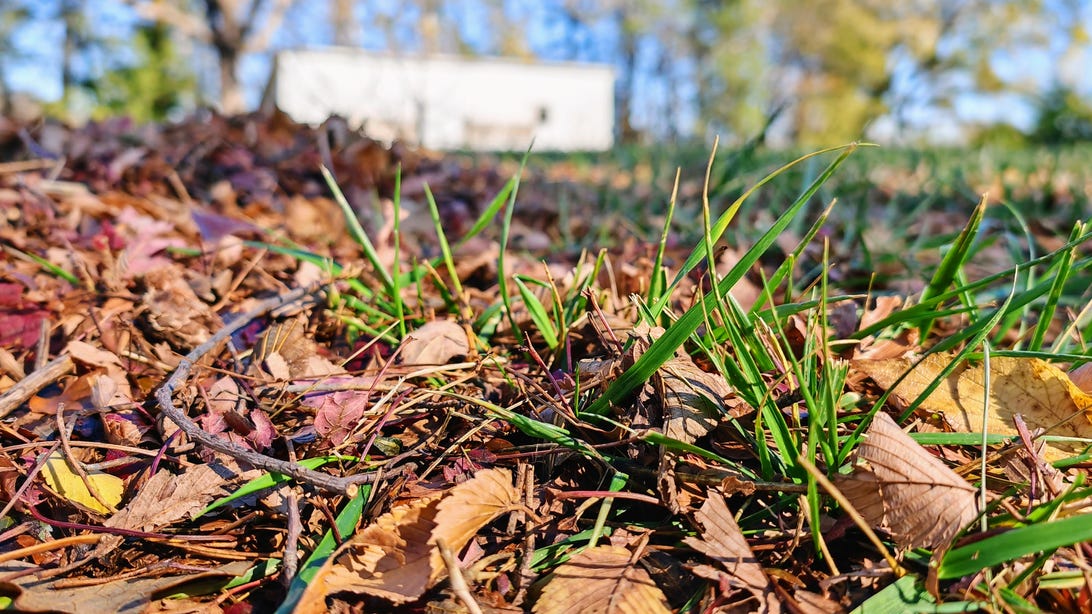**Get Your Lawn Ready for Fall: 4 Essential Steps for DIY Lawn Care**
Fall brings a host of new chores, especially if you love keeping your lawn neat. If you’re running late with fall lawn care as winter approaches, don’t worry! Use these simple tips to get your lawn ready for the season ahead.
A recent CNET survey found that 53% of US adults are cutting back on nonessential spending. If you’re among them, consider tackling your own lawn care—it’s a smart way to save money and maintain your yard. In a popular Reddit thread about lawn care for first-time homeowners, users admitted that fall maintenance can be overwhelming, especially if you’re dealing with weeds and bare spots. The consensus: start with simple observation and maintenance before diving into big projects.
If your lawn’s been neglected and mowing has become a rushed chore, there’s still time to help it recover for winter—and set it up to flourish next year. With advice from experts at Lowe’s and Scotts, here are four key steps to kickstart your fall lawn care.
—
**1. Feed Your Lawn Twice This Fall**
Think of your lawn like any living thing—it needs nourishment, especially before a long winter sleep. According to Matt Koch, Director of Biotechnology, Genetics, and Seed at Scotts, you should apply two fertilizer feedings during fall.
Start with a product like Scotts Turf Builder WinterGuard in early fall to both feed your lawn and eliminate weeds before they go dormant. This strengthens your grass and helps repair roots damaged by summer heat. After six to eight weeks, apply a second fertilizer designed for winter support about two to three weeks before your area’s first expected frost. This helps your lawn store energy for vigorous spring growth.
—
**2. Reseed Bare Spots and Aerate Your Yard**
Fall is the ideal time to fix bare patches and overseed for a denser lawn. If you’ve done home repairs or your lawn is suffering in places, take action now!
Lowe’s lawn care expert Brian Shaunfield recommends reseeding and aeration in fall, when lawns see less activity. Be sure to water new seed frequently, since fall rainfall isn’t always dependable.
For larger damaged areas, try Scotts Turf Builder Rapid Grass. To patch smaller spots, use Scotts EZ Seed Patch and Repair Sun and Shade. Both mixes thrive when properly cared for.
Compacted soil from regular foot traffic can make growth tough for grass roots. If this sounds like your lawn, aerating can help. Simple tools like the Gardenised Spike Lawn Aerator make the job easy.
—
**3. Cut Your Grass Shorter Before Winter**
During summer’s hottest months and dry spells, keeping your grass longer (around 4 inches) is best. As temperatures drop, adjust your mowing routine.
Matt Koch advises gradually lowering your mower deck, or programming your robotic mower to cut the grass shorter—aim for 2 to 2.5 inches before winter hits. Don’t cut it all at once; gradual reductions are best. Shorter grass helps reduce disease risk and allows better energy storage for the roots. Remember, cutting too short can have the opposite effect, so go slowly.
—
**4. Rake Your Leaves to Let Grass Breathe**
As the trees put on their fall display, those vibrant leaves will eventually fall to the ground. While a thin layer of decaying leaves provides natural fertilizer, too much can be harmful.
Thick piles of leaves can smother grass and other small plants. Plus, excess leaves, especially on patios and near foundations, make great homes for insects—and you don’t want pests near your house! Regularly rake and remove leaves to keep your lawn healthy and pest-free.
—
**Final Tip**
Stay consistent and patient, and your lawn will thank you with hearty growth next spring. DIY lawn care is easier than you think and a great way to save money while keeping your yard looking its best.
—
**Related Reading:**
[Best Electric Lawn Mower](#)
https://www.cnet.com/news/how-to-take-care-of-your-lawn-raking-leaves-and-other-fall-to-dos-before-winter-arrives/#ftag=CADf328eec
